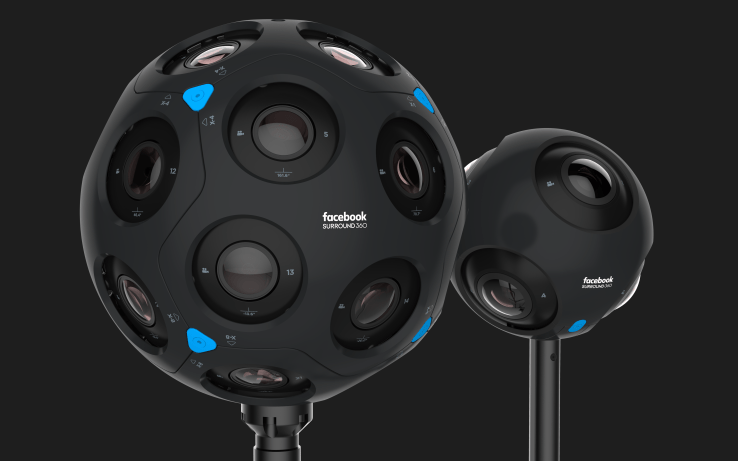
On day two of Facebook’s F8 conference, Facebook’s CTO Mike Schroepfer showed off designs for two new 360 cameras that the company is going to help push to market. The x24, with 24 cameras, and its little brother the x6, with six cameras, can each capture in six degrees of freedom for more immersive 360 content. Facebook plans to license the designs of the two cameras to select commercial partners to get each to market later this year.
Prototyped in Facebook’s Area 404, the x24 combines the FLIR camera system with Facebook’s proprietary architecture. Being able to shoot in six degrees of freedom (6DoF) cuts out a lot of the work that would traditionally be required to create 360 videos where the watcher can tilt their head in all directions without sacrificing the believability of a given shot.

The conceptual idea, sometimes referred to as volumetric capture, has been heralded for some time as a major milestone for VR. Startups like Lytro have been betting on light fields to get the job done, while 8i has taken a software approach. Instead, Facebook is taking a sparse lens orientation approach that avoids the complex rigs all-together.
“Unfortunately, capturing full 6-DoF 360 videos requires more complex hardware setups like camera arrays or light-field cameras that are not affordable and easy to use for novice users,” a team of Adobe researchers said in a recent paper on the subject.
The benefit of capturing depth information at the pixel level is that it enables fun post-production video masking where a creator could swap out mountains in the background of a video for a beach instead.

These new cameras, building on the original Surround 360, also look fantastic. The old Surround seemed to draw inspiration from the spinning top at the end of Inception, but the x24 and x6’s smaller, simple spherical design is exactly the familiar and welcoming look you want from futuristic technology.
“Part of what we are doing with the ecosystem, and the camera itself, is giving these tools to content creators so they can start to develop this artistic language,” explained Brian Cabral, Facebook’s director of engineering.
Bootstrapping a community is hard work, but Facebook realizes that the success of everything, from News Feed 360 videos to the Oculus itself, depends on an ecosystem of content creators. To this avail, Facebook is partnering with post-production companies and VFX houses, including Adobe, Otoy, Foundry, Mettle, DXO, Here Be Dragons, Framestore, Magnopus and The Mill.
Comments
Post a Comment